What is Oxymel?
“Oxymel” derived from the Greek words “oxys” (sour) and “meli” (honey), reflects its fundamental ingredients. This harmonious blend of sweet honey and tart vinegar is a perfect medium for extracting and preserving the medicinal properties of various herbs.
Organic apple cider vinegar is high in acetic acid, making it great for preservation. Raw vinegar also contains “mother,” a symbiotic colony of bacteria and yeast (SCOBY). The SCOBY is full of enzymes and beneficial microbes that essentially make beneficial herbal compounds more bioavailable.
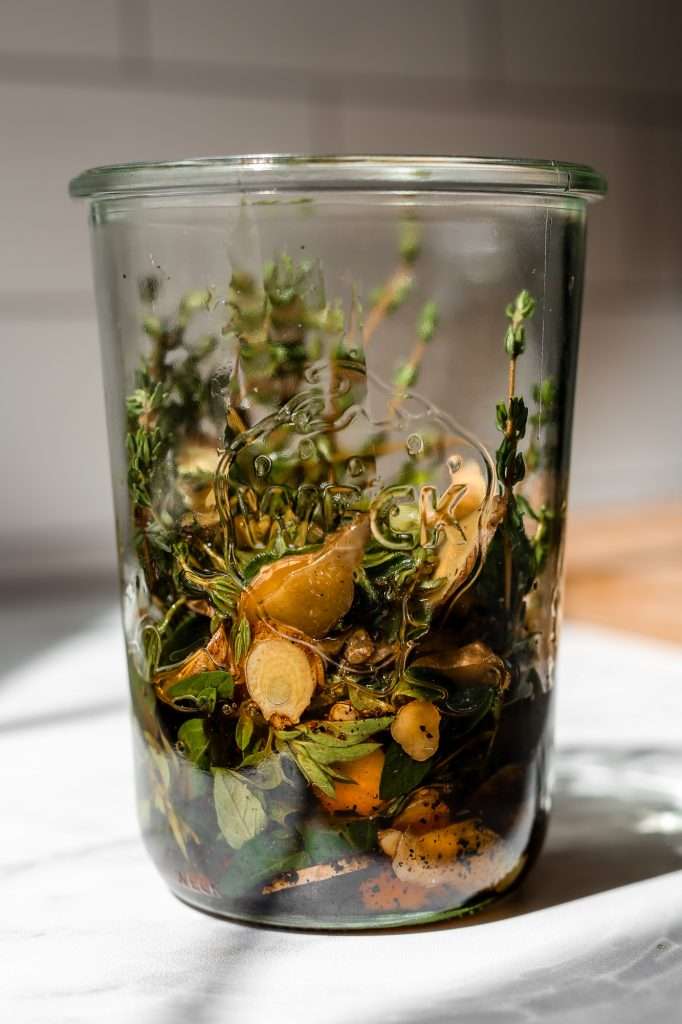
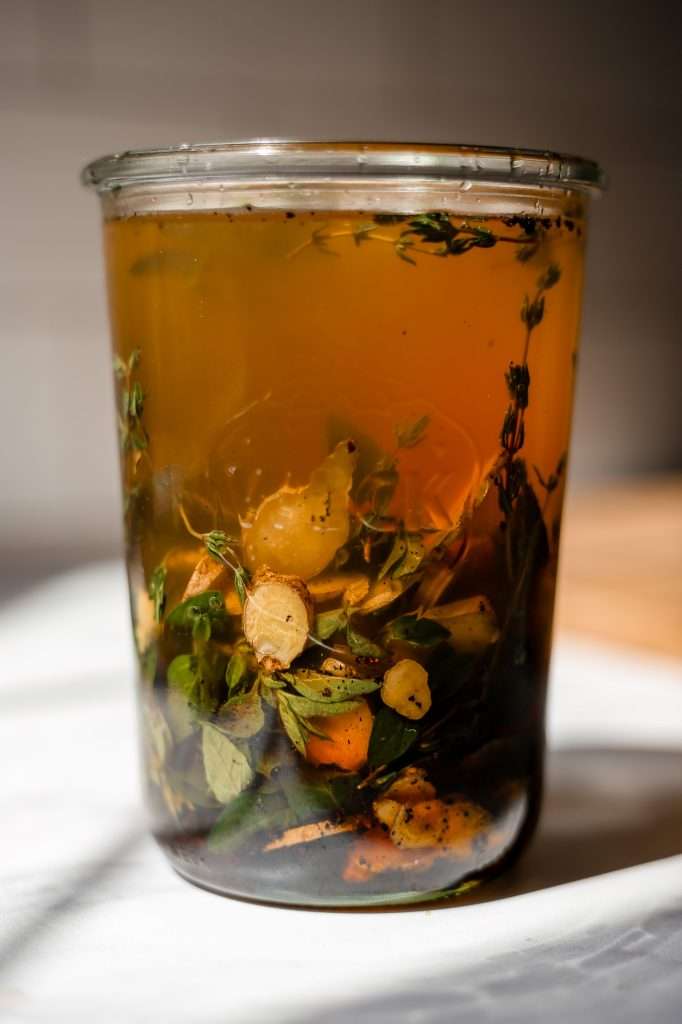
Raw honey has soothing properties and some antimicrobial properties. Honey has been used for centuries as a natural antibacterial agent. But the cool thing about honey is that while it can be effective at killing pathogens, it isn’t antimicrobial against the beneficial microbes associated with this fermentation. So the honey and vinegar here don’t harm the beneficial microbes; the honey is the food for the vinegar microbes.
Its unique composition and nutrient-rich profile also offer various health benefits. Raw honey contains antioxidants, including flavonoids and polyphenols, which help protect your body from the harmful effects of free radicals.
Babies under one year of age should never be given raw honey. So no oxymels for the little ones.
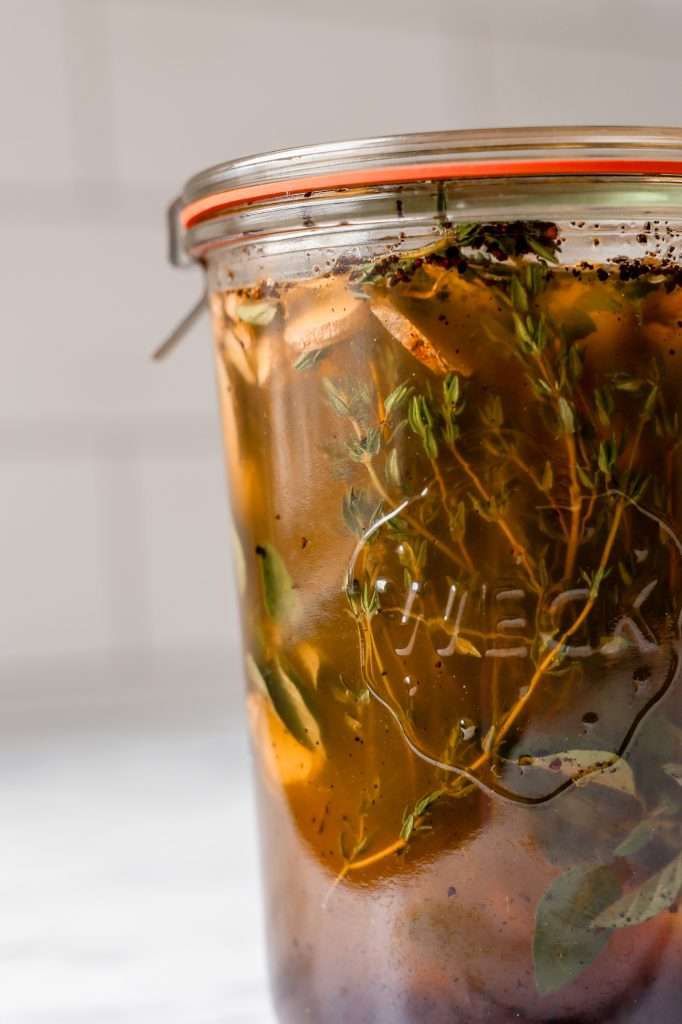
Where is Oxymel From?
The history is as rich as the elixir itself. It originated in ancient Greece and Persia, where it was considered a gift from the gods.
Hippocrates, the famous ancient Greek physician, was a staunch advocate of oxymel and incorporated it into his medical practices. The elixir gained popularity throughout the Mediterranean and Middle Eastern regions, where it was used for its healing properties and as a flavorful condiment. In old-timey England, oxymel was recommended for everything from gout to ear infections.
Oxymel’s prominence continued through the Middle Ages and Renaissance period, with various herbalists and healers extolling its virtues.
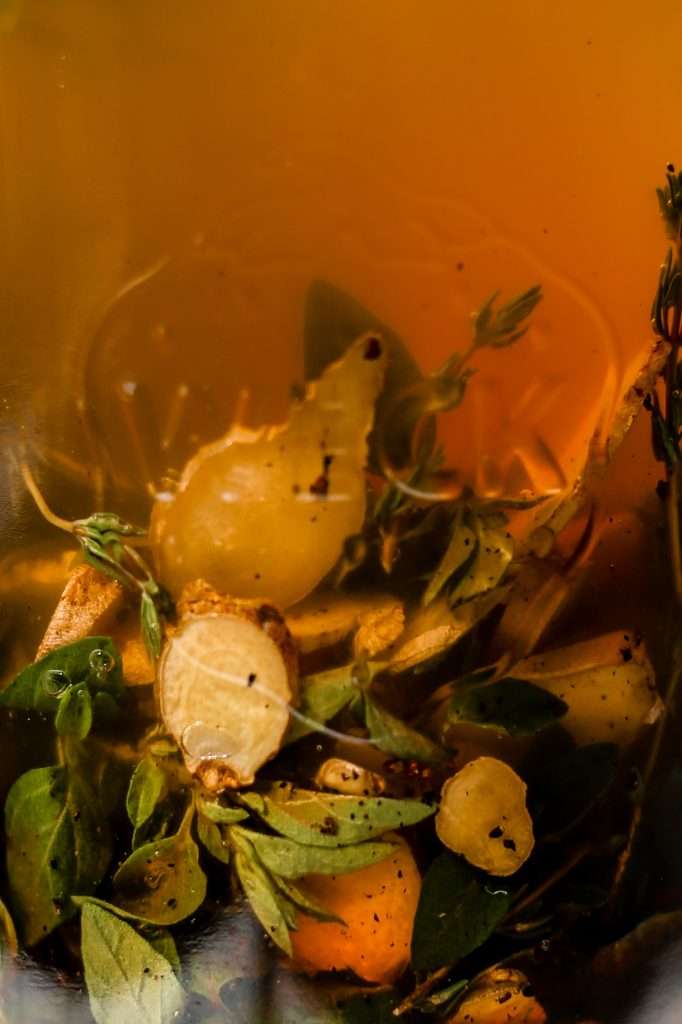
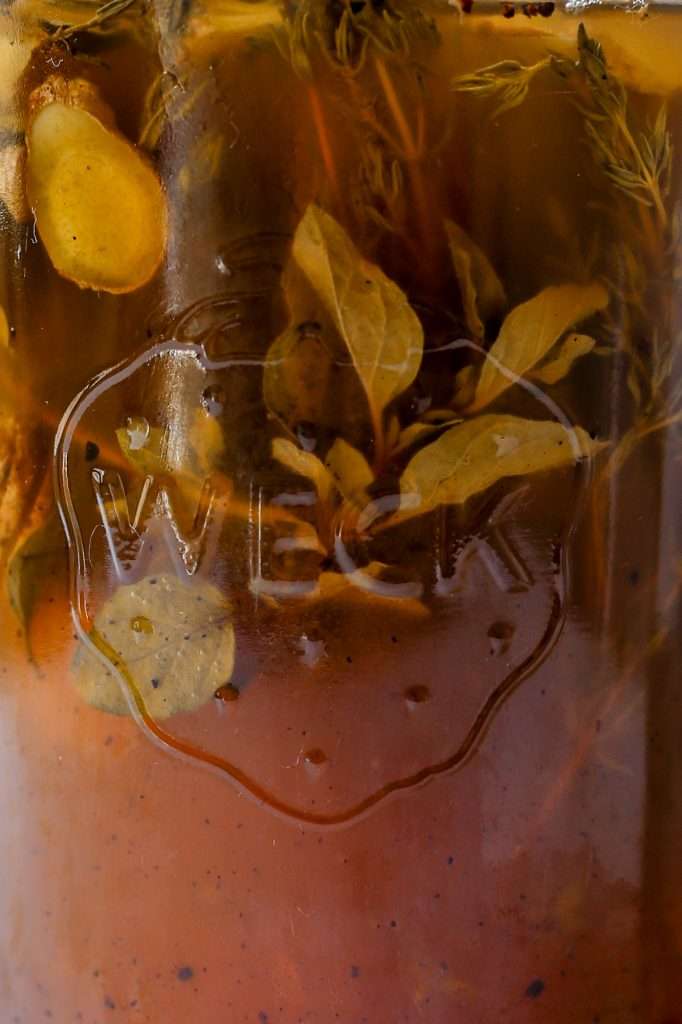
How to Make Oxymel
Since oxymel is made with raw honey and raw vinegar, it essentially ferments into a potent herbal vinegar. The microbes in raw vinegar mother first consume the honey turning it into alcohol. The microbes also simultaneously convert the alcohol and sugars into acids. This makes it a fantastic process for extracting the medicinal compounds of herbs, making them more bioavailable. You can also use raw kombucha in place of raw vinegar, since the microorganism are very similar and will facilitate the same type of fermentation.
Creating your oxymel is a straightforward process, and you can customize the recipe with herbal mixtures that fit your needs. After chatting with a few certified herbalists, I learned that the amount of herbs you should use is different for fresh vs dry herbs.
- Dried Herbs: Typically with dried herbs you should use a hefty amount of herbal material, about 1 cup of non-packed herbs per dried herb you’d like to use.
- Fresh Herbs: Rinse them well. I usually just loosely pack the jar half full with fresh herbs. However, herbalists recommend using much more herbal material for potency; they recommend 3 cups of non-packed fresh herbs per type of herb you’re using. You can tamper the herbs in the jar to get them to fit, or use a larger jar.

What Does Oxymel Taste Like?
Oxymel boasts a distinct flavor profile. It’s slightly sweet from honey, and sour like vinegar. Depending on the herbs used, it can have additional flavor nuances. For example, a thyme-infused oxymel will carry herbal and earthy notes, while a ginger-infused version will have a kind of spicy kick.
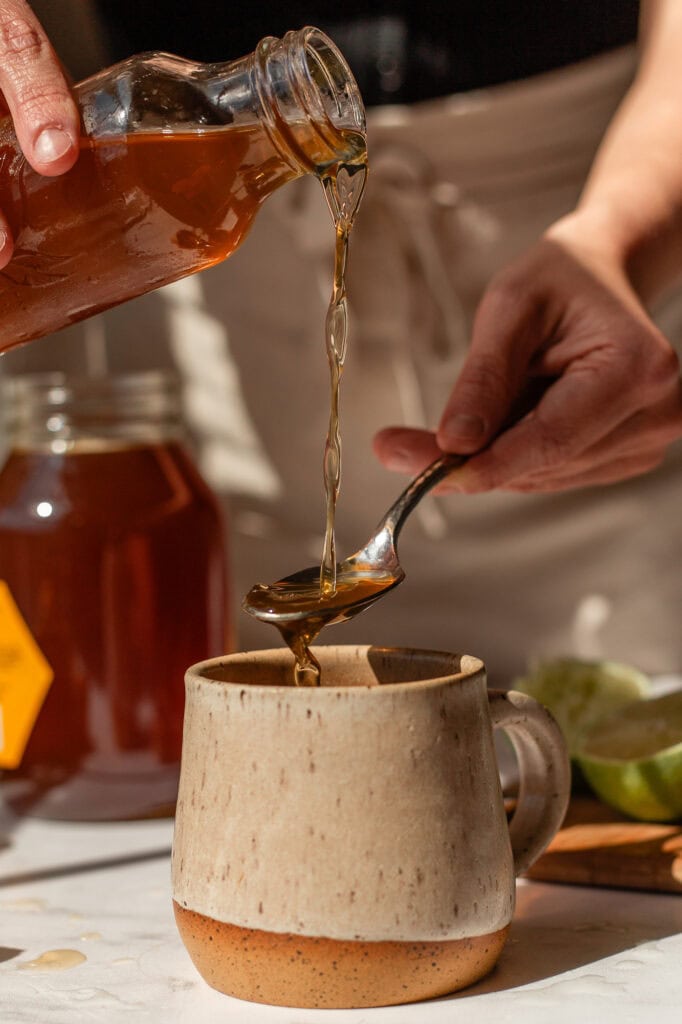
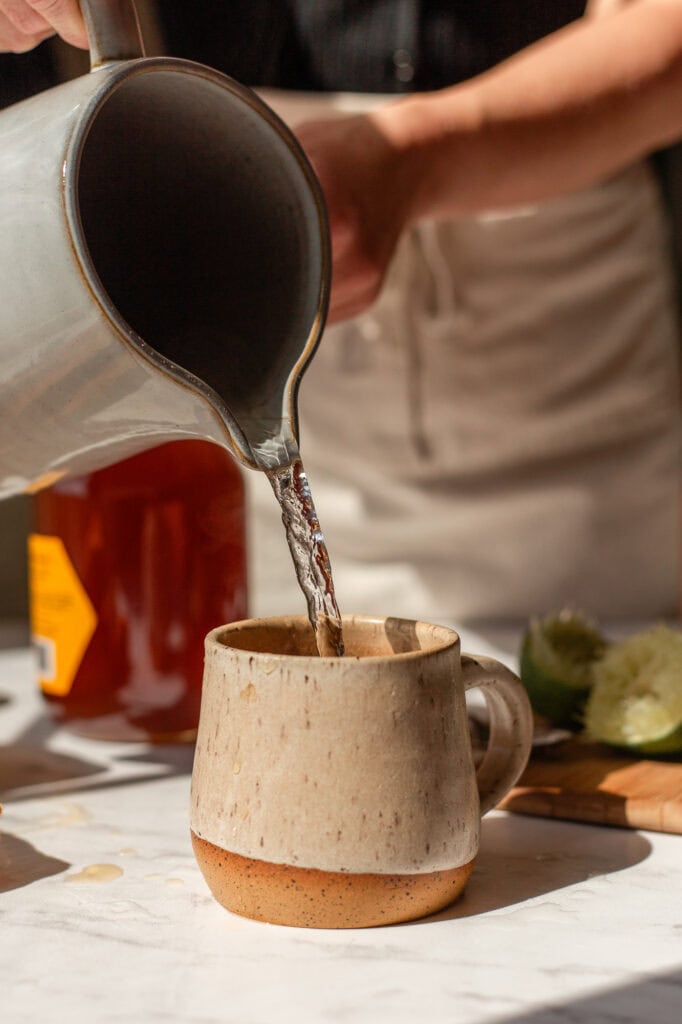
How to Use It
The only way I really love using my oxymel is by making a hot or iced tea. I combine two tablespoons of oxymel, two tablespoons of lime/lemon juice, one teaspoon of honey, and 12 ounces of water. I prefer to drink it with hot water when I’m having allergies or a sore throat, and prefer cool water for a summer herbal iced tea.
While I cannot say that oxymel cures or treats anything, I have used it with various functional herbs for various ailments and wellness goals. Oxymel is quite versatile, and here are a few other ways you can incorporate it into your daily life:
- Sip it Straight: Take a teaspoon straight or diluted in warm water to soothe a sore throat, boost your immune system, or aid digestion.
- Salad Dressing: Use it as a sweet, tangy salad dressing. Its unique flavor profile adds depth to your greens.
- Cocktail Mixer: Get creative and add it to cocktails or mocktails for a unique twist. Its sweet and sour notes pair well with various spirits and flavors.
- Marinade: Use it as a marinade for meats or vegetables. The acidity of the vinegar helps tenderize and flavor your dishes.
- As a Tonic: Take a spoonful daily as a general health tonic to support overall well-being.


How Long Does it Last? Storing Long Term
When stored properly, it has a relatively long shelf life. It can last up to a year or even longer when kept in a cool, dark place and tightly sealed. Over time, the flavor may change slightly, but it remains safe to consume. Just ensure you use quality, raw vinegar with good acidity (5%).
Where to buy Herbs
I always recommend organic and buying from companies with transparent sourcing information (please do not buy herbs from Amazon). My favorite place to get herbs is Starwest Botanicals. I’ve been sourcing from them from over ten years for teas to make my kombucha and spices to use in my ferments. Click here for their online store.

Herbal Oxymel Recipe Combinations from Certified Herbalists
I’m so grateful to have collaborated with Dr. Maddie Bergner (Doctorate of Acupuncture & Herbal Medicine) to provide you with these functional herbal combinations you can use in this oxymel recipe. Maddie is a licensed and board-certified acupuncturist & herbalist in Colorado, and the founder & owner of Open Space Acupuncture:
- Mulberry, goji berry, jujube, longan berries (anxiety, insomnia)
- Schisandra berries, ginseng, fresh ginger (poor immunity, chronic cough and wheezing)
- Rosemary, sage, thyme, lavender (immune tonic)
- Fresh ginger, licorice root, codonopsis, poria (weak digestion w/ diarrhea)
- Elderberry, fresh ginger, astragalus root (immune tonic)
- Ginger, turmeric, cramp bark (period cramps)
The second herbalist I collaborated with is Liliana Ruiz-Healy, and she specializes in women’s functional health and hormonal nutrition. I was very excited for her recommendations, since I’m always looking for ways to improve my health as a woman. Here are the combinations she recommends:
- roasted dandelion root, roasted chicory root, burdock root, calendula, rose petals, and hawthorn berry (skin, liver, and hormone health)
- ginger, fennel seed, chamomile, lavender, passionflower, and motherwort (PMS support)
- yellow dock root, dandelion root or leaf, nettles, oatstraw, red raspberry leaf, and rosehip or citrus peel (mineral & iron boosting)
The third herbalist I chatted with to gather more fantastic oxymel combinations is Karly Loomis. Shes a practicing herbalist, mother, and lover of food from scratch. I just became a huge fan of her Instagram account and love these recommendations she provided for us:
- Nettle, Oatstraw (or tops), Raspberry Leaf, Horsetail (nourish and build the blood, connective tissues, musculoskeletal system, and the hair/ skin/ nails)
- Tulsi (Holy Basil), Garden Sage, Rosemary, Ginkgo (support cognitive function)
- Rosehips, Citrus Peels (or whole citrus slices), Elderberry, Ginger (immune support)
- Chickweed, Cleavers, Violet Leaf, Calendula, Burdock Root (support lymphatic drainage)
- Rose, Hawthorn (leaf, berry, and/or flower), Reishi Mushroom, Damiana, Linden (cardiovascular health)
- Valerian, Skullcap, Passionflower, Chamomile (anxiety and better sleep)
The last herbalist I spoke with is Brett Ivy of Piney Oaks Homestead. We’ve chatted on social media many times, and I had no idea she is an herbalist and a doula, until now! She has a farm stand, and lives with a food is medicine approach to life. She also keeps things approachable and straightforward enough for beginners who are just getting into fermentation and herbs. Here are her recommendations:
- Tulsi, Lemon Balm, Nettle Leaf (everyday favorite for stress and burnout)
- Thyme, Mullein, Ginger, Ceylon Cinnamon (lung health & respiratory relief)
- Elderberry, Fresh Ginger, Lemon Peel (immune support for cold and flu season)
- Hawthorn Berry, Linden, Lemon Balm (emotional and physical heart support)
- Chamomile, Orange Peel, Roasted Dandelion Root (digestive support, sluggish digestion)
The recommendations provided can help with the designated ailments; however, oxymel is not intended to cure or treat any conditions. Talk to your trusted healthcare provider if you are experiencing any health issues.
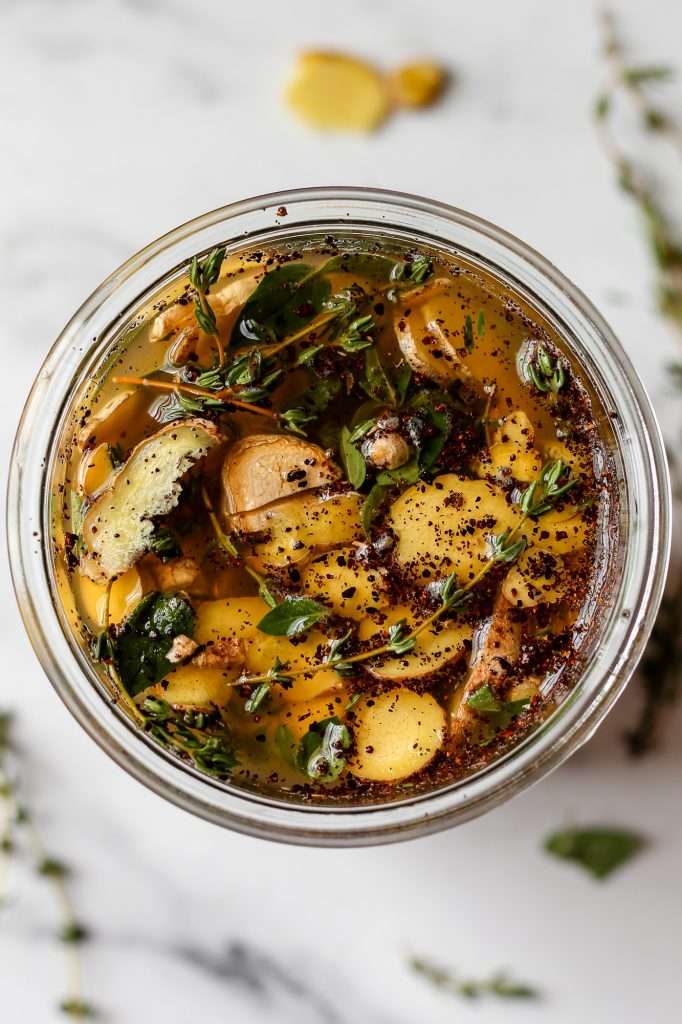
Easy Homemade Oxymel Recipe With Any Herbs
Oxymel is a medicinal herbal elixir, made through the fermentation of herbs in honey and raw vinegar. This recipe is joyfully written in collaboration with a doctor of acupuncture & herbal medicine, two practicing herbalists, and a herbalist doula.
- Prep: 10 minutes
- Total Time: 168 hours 10 minutes
Ingredients
- 32 ounce glass jar with a lid
- Herbs, dried or fresh (see instructions for quantities)
- Raw Honey
- Raw Vinegar (or fully fermented raw kombucha)*
Instructions
- Check the recipe notes for a list of herbal combinations recommended by certified herbalists. The amount of herbs you need depends on how much you’d like to make. You need enough herbs to fill your jar halfway. Rinse any fresh herbs in cool water before using.
- You can use fresh herbs, dried herbs, or a mix: once you select a herbal combination, pack your jar halfway full of herbs. I always use an even mix of all the herbs in the combination. (see notes for herbalist-recommended potency)
- Add all of your herbs to the jar.
- Cover the herbs halfway with honey, then top the jar the rest of the way with raw vinegar.
- Wipe the jar rim, cap the jar with a rust-proof solid lid, and shake until the honey is fully dissolved in the vinegar.
- Put the oxymel in a cool place out of direct sunlight to infuse for at least 7 days and up to 30 days.
- It’s okay if you skip a day, but it’s best to shake the jar, or open it up and stir it, once a day.
- After infusing it to your liking, strain out the herbs with a fine mesh strainer. (I like to compost the spent herbs)
- Store the strained oxymel in a jar/bottle with a lid in a cool place out of direct sunlight. It will keep for 6 months (possibly longer). I suggest storing it in the fridge for a longer shelf life.
- To use your oxymel: combine two tablespoons of oxymel, two tablespoons of citrus juice, one teaspoon of raw honey, and 12 ounces of filtered water. (I prefer to drink it with hot water when I’m having allergies or a sore throat, and prefer cool water for a summer wellness iced tea).
Notes
Vinegar must be raw, with the mother. Fully fermented raw Kombucha is a fantastic substitute.
The herbal combination pictured in this blog: fresh thyme, fresh oregano, dried chaga mushrooms and fresh ginger.
Please see the blog post section above this recipe card for a full selection of herbal combinations from certified herbalists. Here are my favorite combinations from each herbalist I collaborated with:
- Mulberry, goji berry, jujube, longan berries (anxiety, insomnia)- Dr. Maddie Bergner
- Ginger, turmeric, cramp bark (period cramps)- Dr. Maddie Bergner
- Roasted dandelion root, roasted chicory root, burdock root, calendula, rose petals, and hawthorn berry (skin, liver, and hormone health)- Liliana Ruiz-Healy
- Valerian, Skullcap, Passionflower, Chamomile (anxiety and better sleep)– Karly Loomis
- Chamomile, Orange Peel, Roasted Dandelion Root (digestive support, sluggish digestion)– Brett Ivy
I always just fill my jar halfway with an even mix of herbs. But here are some herbalist recommendations for full potency mixtures:
- Dried Herbs: Typically, herbalists recommend a hefty amount of dried herbs for “full potency.” So, about 1 cup of non-packed herbs per dried herb you’d like to use. (This requires a large jar, a lot of herbs, and a lot of honey)
- Fresh Herbs: Herbalists recommend using much more herbal material of fresh herbs for potency; they recommend 3 cups of non-packed fresh herbs per type of herb you’re using. You can tamper the herbs in the jar to get them to fit, or use a larger jar. (Again, this requires a large jar, a lot of herbs, and a lot of honey)

















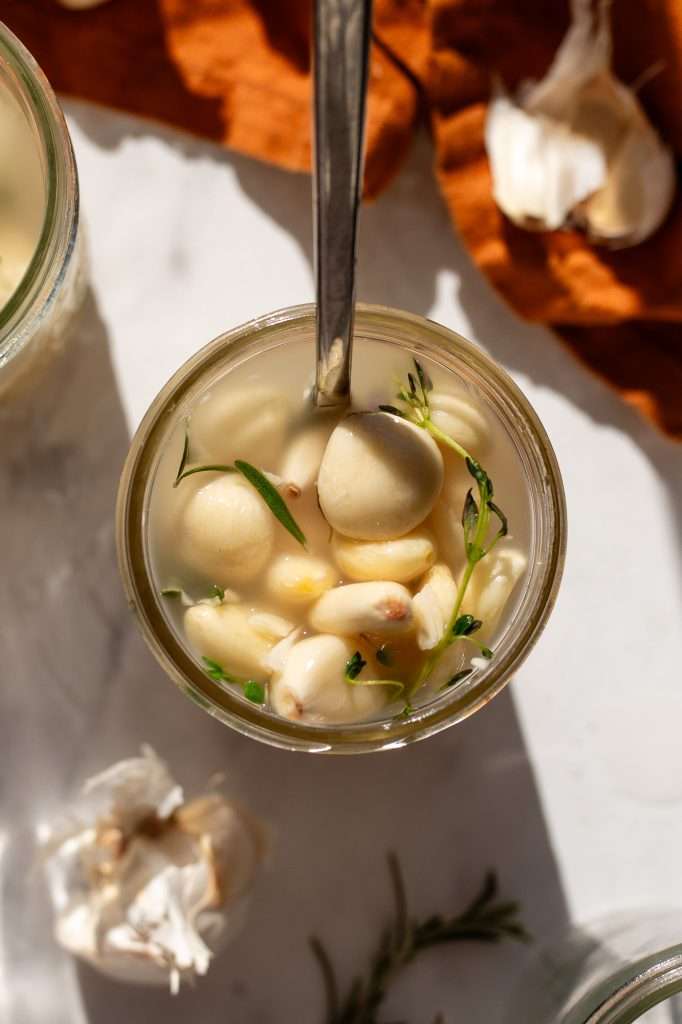



Easy to make and lovely to look at. I haven’t tasted it yet but I’ve had oxymel before and this time I know the ingredients. My honey and ginger came from local farmers. My acv is Braggs and the herbs came from my garden. What could be better!
Super easy to make and follow instructions. We let it sit for 30 days. It definitely got more tart and spicy. We did garlic and ginger. However, only down side both my husband and I took a ‘shot’ of it and felt a weird sensation in our diaphragm / not good feeling. Maybe we took too much or needed it diluted.
Hi! Thank you so much for the Recipe. Made some Oxymel last year following your suggestions and really enjoyed it during the fall months. I’m preparing a new batch and wondering if I can use dried eldeberrys. I Know you normally have to cook these before consumption.
You should probably cook them first them use them in the oxymel!
Thank you so much. Un grand merci!! Cheers from Montréal!
Love anything fermented
Thank you so much for this info, I am a beginner of making my own tinctures and this is wonderfull
Thankful for this recipe.
Warmest regards!!